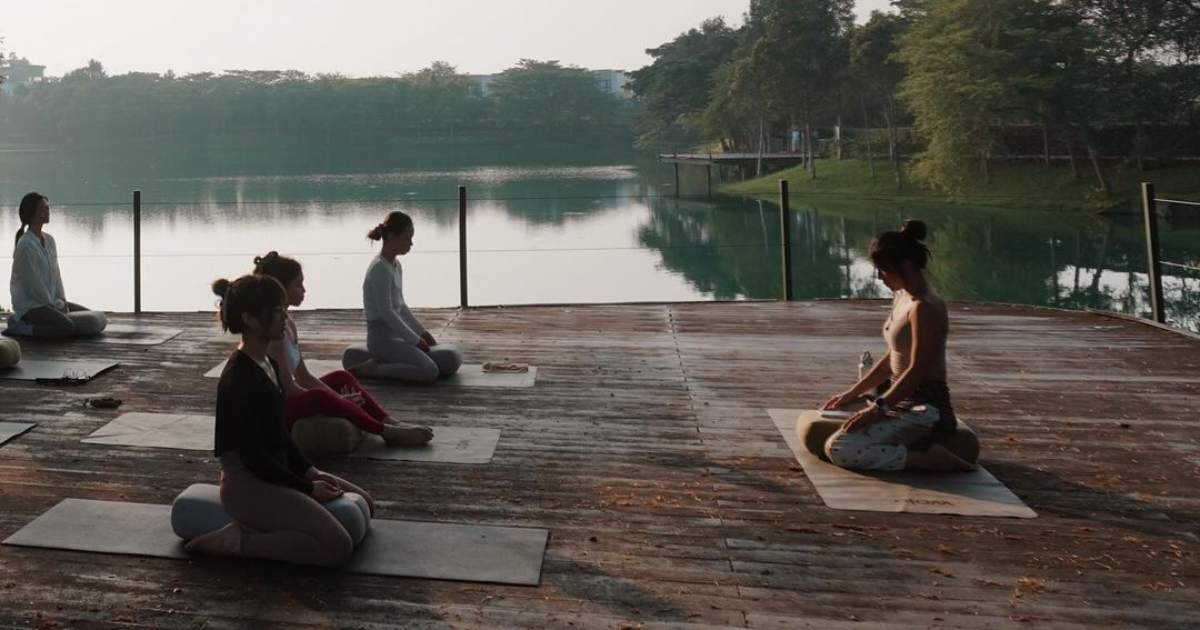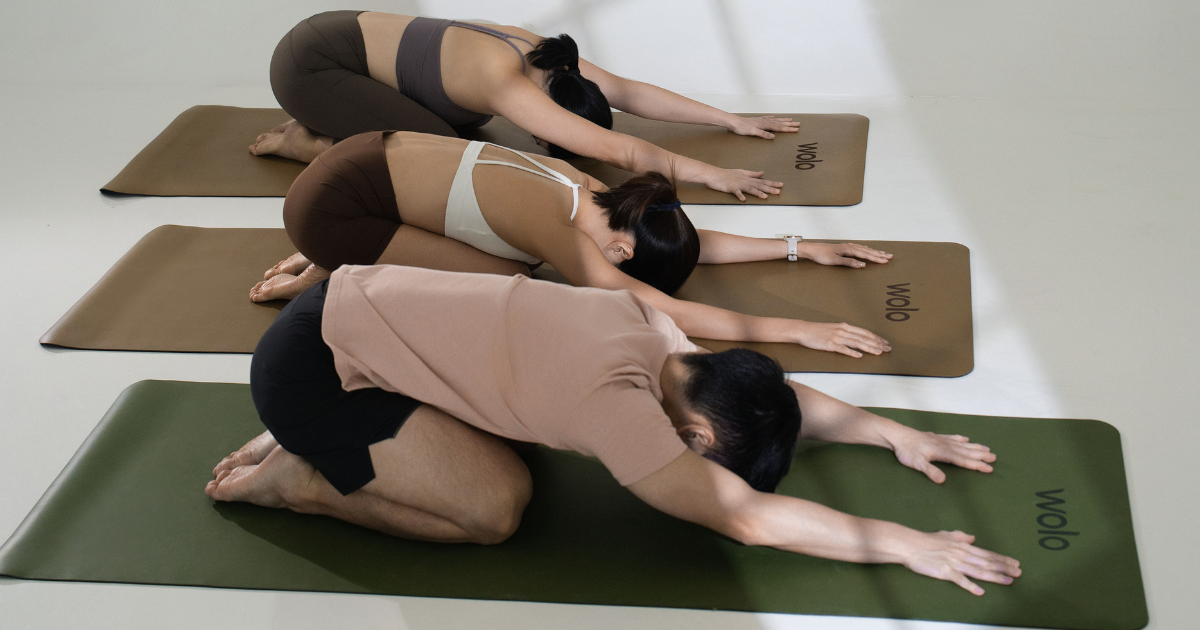When I first started yoga, I had no idea there were so many styles. I walked into a random class expecting a chill stretch session… and found myself sweating buckets in a fast-paced Vinyasa class. (Spoiler: I barely survived.)
If you've ever felt overwhelmed by all the yoga options, you're not alone. Do you want something slow and relaxing? A sweaty workout? A deeply spiritual practice? With so many types, it’s easy to get lost.
That’s why I put together this simple guide to help you find the best type of yoga for you.
What is Yoga?
Originating in India over 5,000 years ago, yoga was traditionally a spiritual discipline aimed at achieving balance between the mind and body. Today, it has evolved into various forms, with some styles emphasizing physical fitness and flexibility, while others focus on relaxation, breath control, or mindfulness.
At its core, yoga is about connection—between movement and breath, body and mind, and ultimately, oneself and the present moment. Whether practiced for fitness, stress relief, or personal growth, yoga offers a path to improved health and self-awareness.
The beauty of yoga is its accessibility—anyone, regardless of age or fitness level, can find a style that suits them.
Benefits of Yoga
Yoga is more than just stretching—it’s a holistic practice that strengthens the body, calms the mind, and enhances overall well-being. Here are five key benefits:
- Improves flexibility and mobility. Yoga helps loosen tight muscles and improves range of motion. Regular practice reduces stiffness, enhances mobility, and prevents injuries, making daily movements smoother and more comfortable.
- Builds strength and endurance. Many yoga poses engage multiple muscle groups, helping to build strength and stability. Styles like Power, Ashtanga, and Vinyasa yoga improve endurance while toning the body without heavy weights or machines.
- Reduces stress and promotes relaxation. Yoga activates the body’s relaxation response, lowering stress hormones and calming the nervous system. Deep breathing and mindful movement ease anxiety, improve mood, and create a sense of inner peace.
- Enhances focus and mental clarity. By emphasizing breath control and present-moment awareness, yoga sharpens concentration and reduces mental distractions. This improves cognitive function, productivity, and overall mindfulness in daily life.
- Supports better sleep and well-being. Gentle yoga helps relax the body and mind, making it easier to fall asleep and stay asleep. It also promotes emotional balance, reduces fatigue, and leaves you feeling refreshed and energized.
10 Types of Yoga and Who They’re Best For
Before we dive in, here’s a quick cheat sheet to help you find the best yoga style for your goals:

Now, let’s break each one down!
1. Hatha Yoga – Best for Beginners

Hatha Yoga is often considered the best starting point for beginners because it focuses on foundational poses and gentle movements. The pace is slower compared to other styles, allowing you to learn the proper alignment of each pose without feeling rushed. Classes often include breathing exercises and short meditation sessions, making it a well-rounded introduction to yoga.
If you’re new to yoga or looking for a class that prioritizes mindfulness and basic techniques, Hatha Yoga is a great choice. It’s also ideal for those recovering from an injury or simply wanting a more relaxed approach to movement.
2. Vinyasa Yoga – Best for a Dynamic Workout

Vinyasa Yoga is all about flow. Instead of holding poses for long periods, you transition smoothly from one to the next in coordination with your breath. This creates a dynamic, almost dance-like sequence that keeps your body moving continuously. Some classes are slow and steady, while others are fast-paced and feel more like a workout.
This style is great if you enjoy movement and want to build both flexibility and strength. Because it can range from moderate to intense, Vinyasa is a popular choice for those who want a mix of physical challenge and mindfulness.
3. Ashtanga Yoga – Best for Strength and Discipline
Ashtanga Yoga follows a set sequence of poses performed in the same order every time. It’s a physically demanding practice that requires discipline and commitment, as it emphasizes strength, endurance, and precise movements. Unlike Vinyasa, which allows more variation, Ashtanga sticks to a strict structure, making it appealing to those who thrive on routine.
This style is best suited for people who enjoy challenges and are willing to build strength over time. Since it’s one of the more intense forms of yoga, beginners might find it demanding, but those who stick with it often experience significant physical and mental benefits.
4. Power Yoga – Best for Strength and Endurance

Power Yoga is a more intense, fitness-oriented version of Vinyasa. It focuses on building strength, endurance, and flexibility while keeping your heart rate up. Unlike traditional yoga styles that emphasize relaxation, Power Yoga feels more like a workout, making it ideal for those who want to break a sweat.
If you enjoy high-intensity exercise but still want the benefits of yoga, Power Yoga might be a great fit. It’s often recommended for athletes or anyone looking to complement their fitness routine with a challenging, movement-based practice.
5. Bikram (Hot) Yoga – Best for Detox and Sweat
Bikram Yoga is practiced in a heated room, typically set around 40°C, with a humidity level that makes you sweat almost instantly. The class follows a structured series of 26 poses designed to promote flexibility, detoxification, and endurance. The heat helps loosen muscles, allowing for deeper stretches, but it also intensifies the experience.
If you enjoy pushing your limits and don’t mind sweating profusely, Bikram Yoga can be incredibly rewarding. Just be sure to stay hydrated and listen to your body, as the heat can be overwhelming for first-timers.
6. Yin Yoga – Best for Deep Stretching and Relaxation
Yin Yoga is a slow, meditative practice where poses are held for several minutes to target deep connective tissues. Unlike dynamic styles like Vinyasa or Ashtanga, Yin Yoga is all about stillness, allowing your body to relax into each stretch. It’s particularly effective for improving flexibility and releasing tension.
This is a great choice for anyone dealing with stiffness, stress, or anxiety. It’s also beneficial for athletes who need recovery time or individuals looking for a gentle way to improve mobility.
7. Restorative Yoga – Best for Healing and Stress Relief

Restorative Yoga is even gentler than Yin. It involves fully supported poses using props like bolsters and blankets, allowing the body to enter a state of deep relaxation. Unlike other styles, which require some effort, Restorative Yoga encourages total surrender, making it a perfect antidote to stress and burnout.
If you’ve been feeling mentally or physically exhausted, Restorative Yoga is an excellent way to recharge. It’s particularly beneficial for those recovering from injury or struggling with anxiety and sleep issues.
8. Kundalini Yoga – Best for Energy and Spiritual Growth
Kundalini Yoga combines movement, breathwork, chanting, and meditation to awaken energy within the body. It’s a deeply spiritual practice that focuses on increasing self-awareness and inner balance. While it may feel unfamiliar at first, many practitioners find it transformative over time.
This style is best for those interested in the mind-body connection rather than just the physical aspects of yoga. If you’re looking for a practice that integrates meditation with movement, Kundalini is worth exploring.
9. Iyengar Yoga – Best for Alignment and Injury Prevention

Iyengar Yoga is all about precision. It uses props like blocks, straps, and walls to help you achieve proper alignment in each pose. This makes it a great choice for those recovering from injuries or anyone wanting to refine their technique.
Since Iyengar focuses on slow, controlled movements, it’s a good option for beginners who want a safe and structured approach to learning yoga.
10. Jivamukti Yoga – Best for Mindfulness and Philosophy
Jivamukti Yoga blends physical movement with meditation, music, and yogic philosophy. It offers a well-rounded experience that goes beyond just exercise, making it appealing to those who enjoy learning about the deeper aspects of yoga.
If you’re looking for a holistic practice that incorporates spiritual growth along with movement, Jivamukti Yoga is a great choice.
How to Choose the Right Yoga Style for You
Choosing the right yoga style depends on your goals, fitness level, and personal preferences. Start by identifying what you want from your practice. If you’re looking for relaxation, try a slower, meditative style. If you want a workout, opt for a more dynamic and physically challenging class.
Consider your fitness level—beginners may feel most comfortable with gentle styles that focus on foundational poses, while those with more experience might enjoy structured or high-intensity practices. Also, think about how much movement you prefer. Some styles are slow and restorative, while others are fast-paced and strength-building.
The best way to find what works for you is to experiment. Try different classes, listen to your body, and stay open to exploring new styles. Yoga is a personal journey, and there’s no wrong choice—just find a practice that feels right for you!
Types of Yoga FAQs
What are the 5 major types of yoga?
The five major types of yoga are Hatha, Vinyasa, Ashtanga, Yin, and Iyengar. Hatha focuses on basic poses and breathwork, making it ideal for beginners. Vinyasa is a dynamic, flow-based style that links movement with breath. Ashtanga follows a strict, physically intense sequence. Yin is a slow, meditative practice with deep stretches for flexibility. Iyengar emphasizes precision and alignment, often using props for support.
What is the hardest yoga style?
Ashtanga Yoga is often considered the hardest due to its demanding, structured sequence that requires strength, flexibility, and endurance. Power Yoga and Bikram Yoga can also be intense due to their physically challenging flows and heated environments.
What is the most relaxing yoga style?
Restorative Yoga is the most relaxing style, using props to support the body in fully passive poses that promote deep rest. Yin Yoga is also highly calming, focusing on slow, meditative stretches that relieve tension and stress.
Can beginners practice any style of yoga?
Yes! However, Hatha, Iyengar, or Yin Yoga are best for beginners as they emphasize slow movements and proper alignment. Starting with a beginner-friendly class ensures a smooth and safe introduction to yoga.
Do I need to be flexible to do yoga?
Not at all! Yoga is designed to improve flexibility over time, so you don’t need to be flexible to start. Many poses can be modified, and with consistent practice, your mobility will naturally increase.
Final Thoughts on Yoga Styles
With so many yoga styles out there, the key is finding one that fits your goals and lifestyle. Whether you’re looking for a deep stretch, a powerful workout, or a way to unwind after a long day, there’s a yoga practice that’s right for you. Don’t stress about picking the “perfect” one—just start! Try different styles, listen to your body, and see what feels best.
Yoga isn’t about being the most flexible or holding the hardest pose—it’s about connecting with yourself and feeling good in your body. Some days, you might crave an energizing Vinyasa flow, while other times, a slow Yin session is exactly what you need. That’s the beauty of yoga—it grows with you. So roll out your yoga mat, give it a go, and enjoy the journey! Who knows? You might just find your new favorite way to move and relax.





